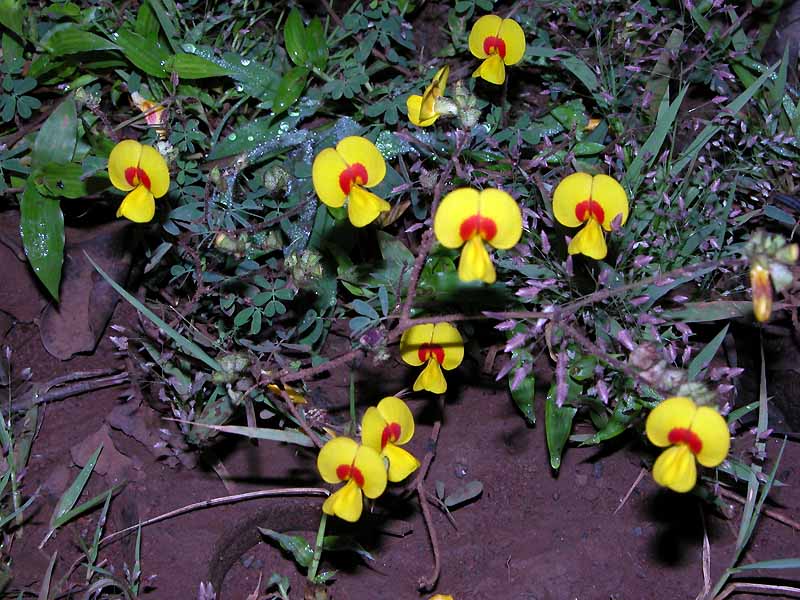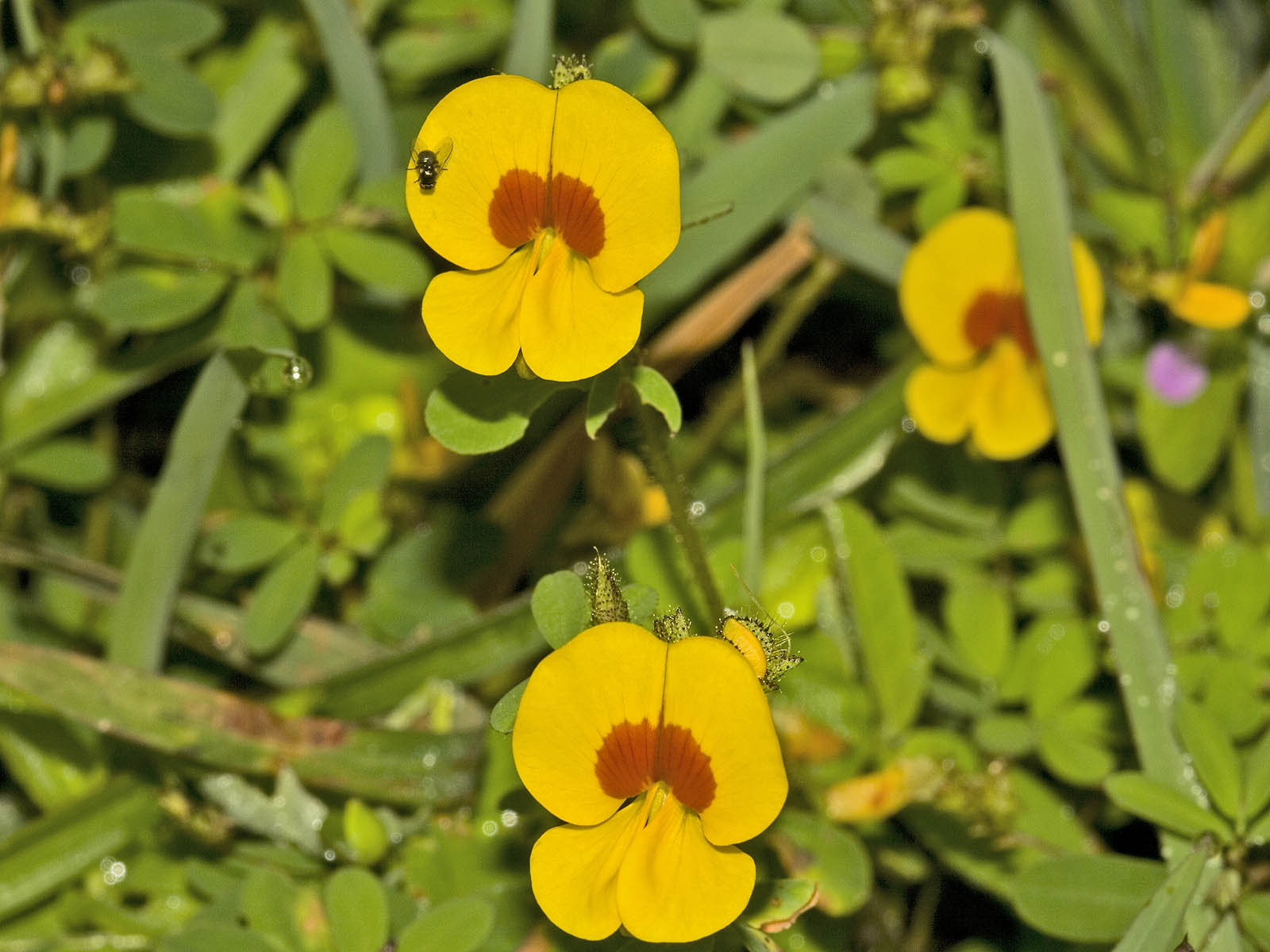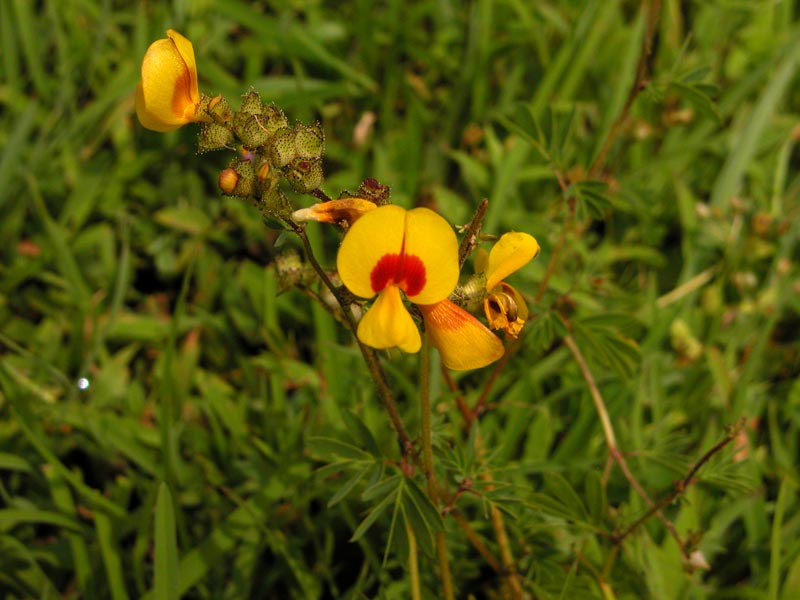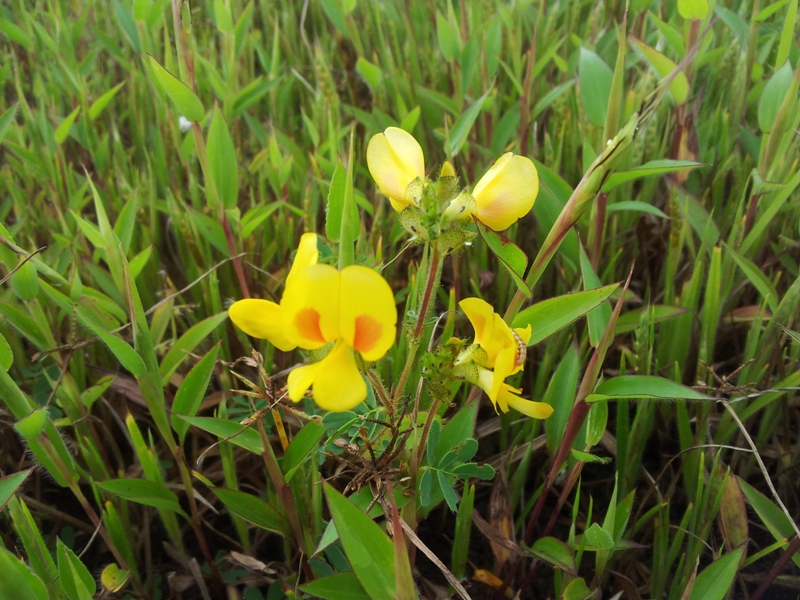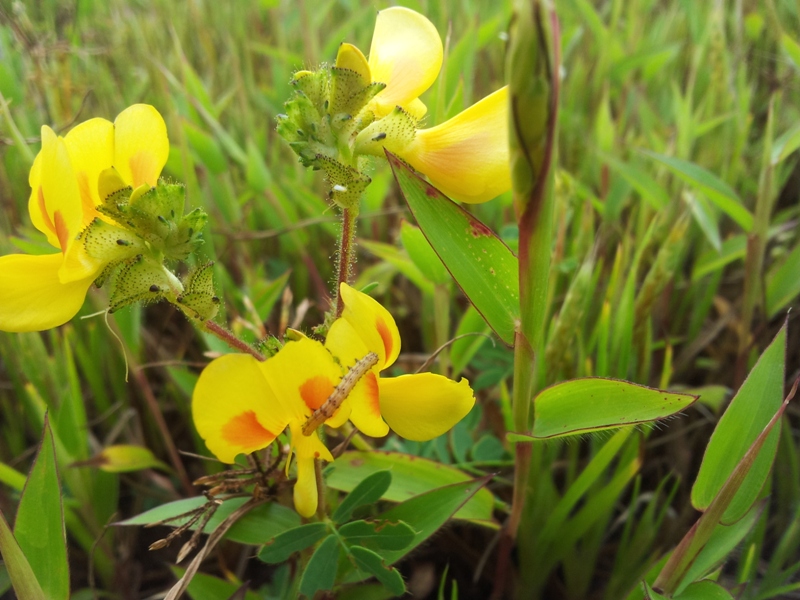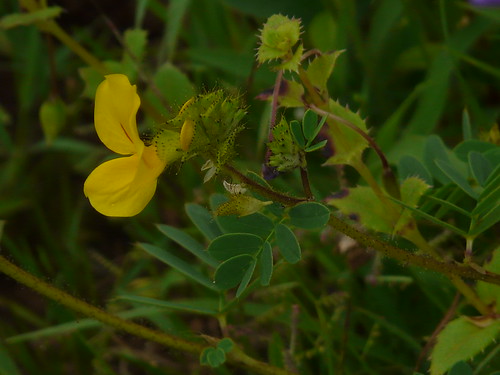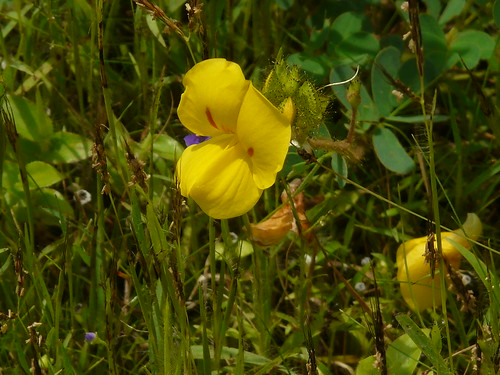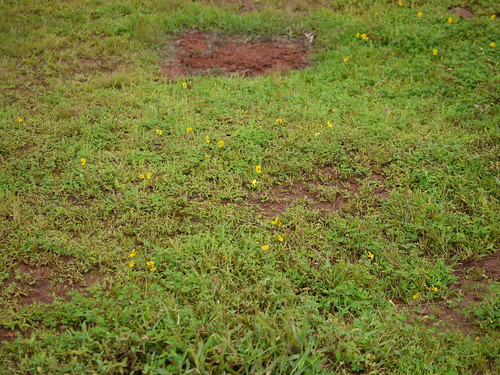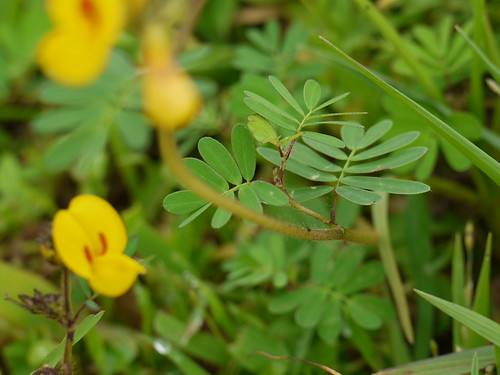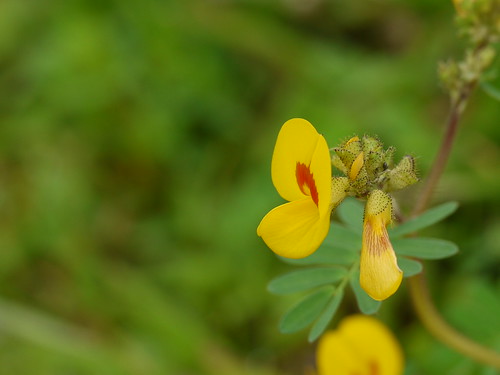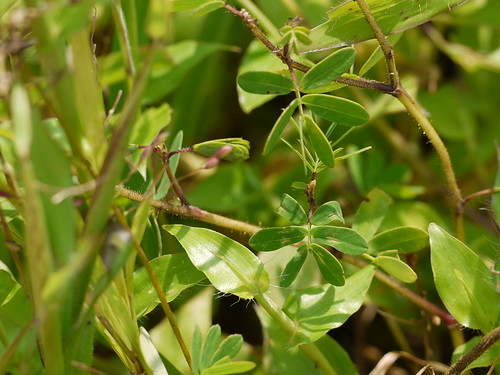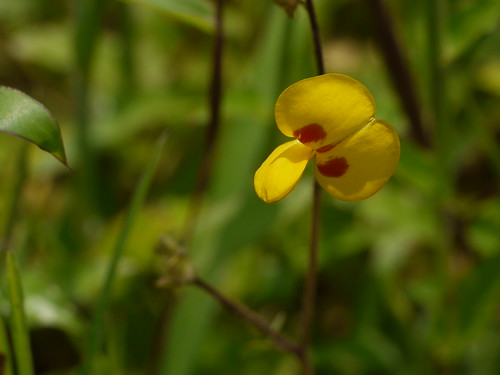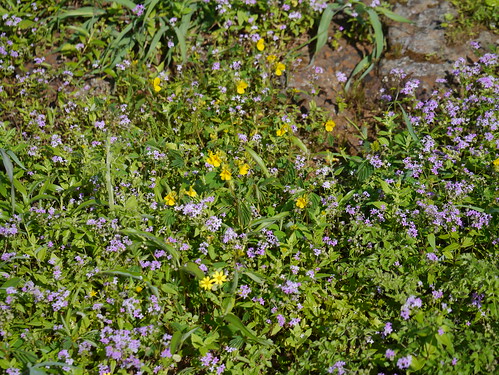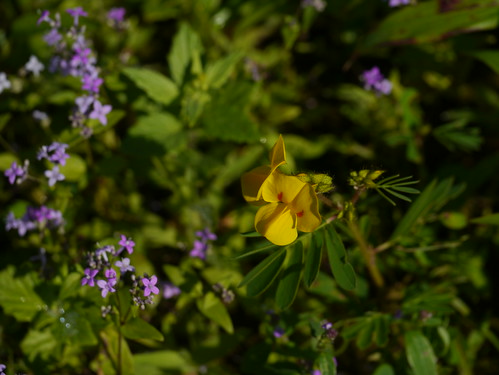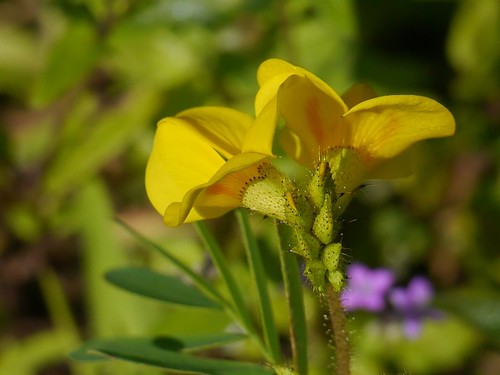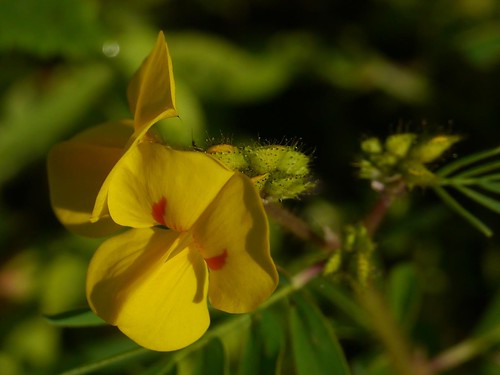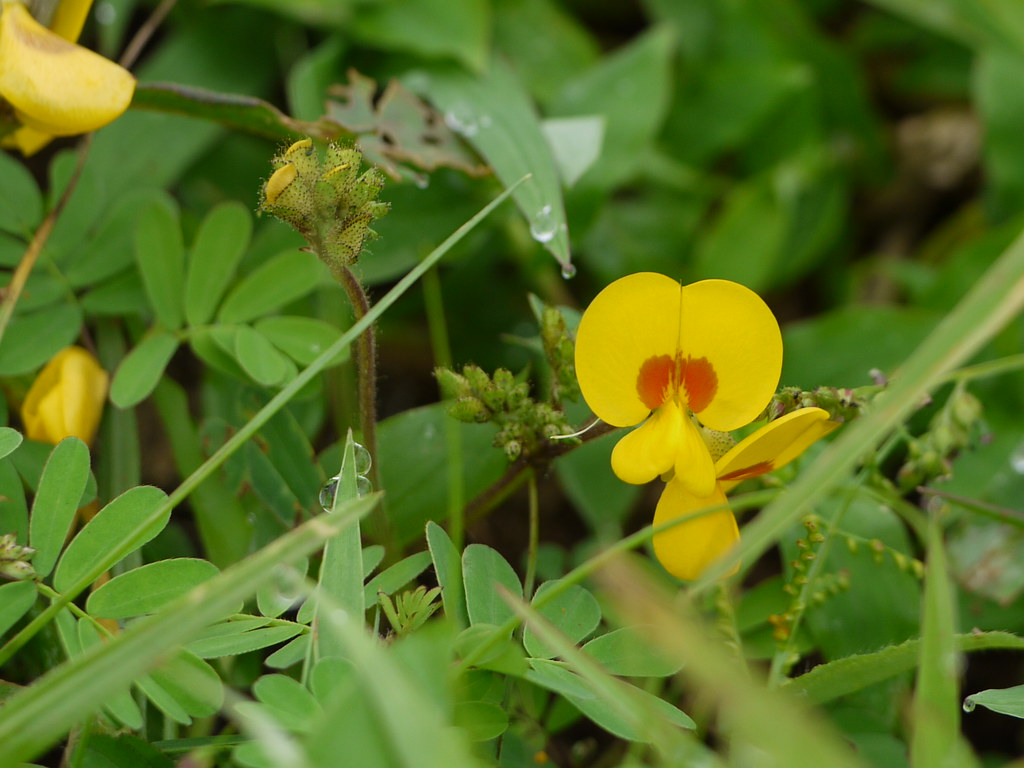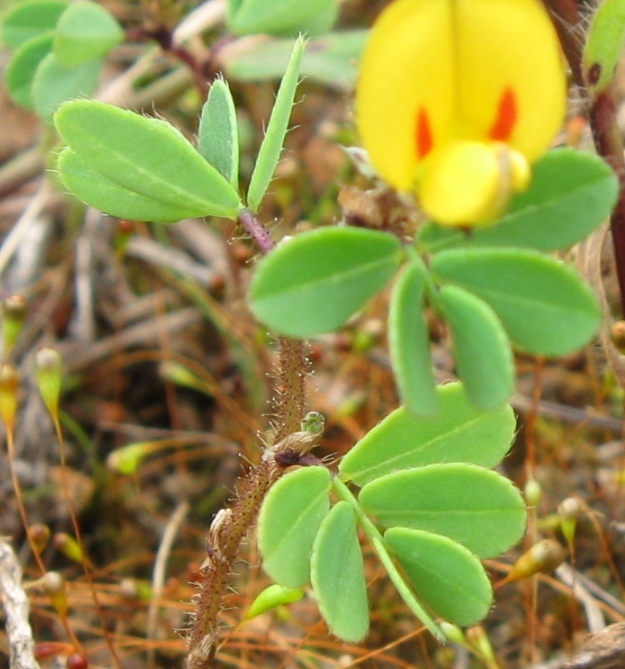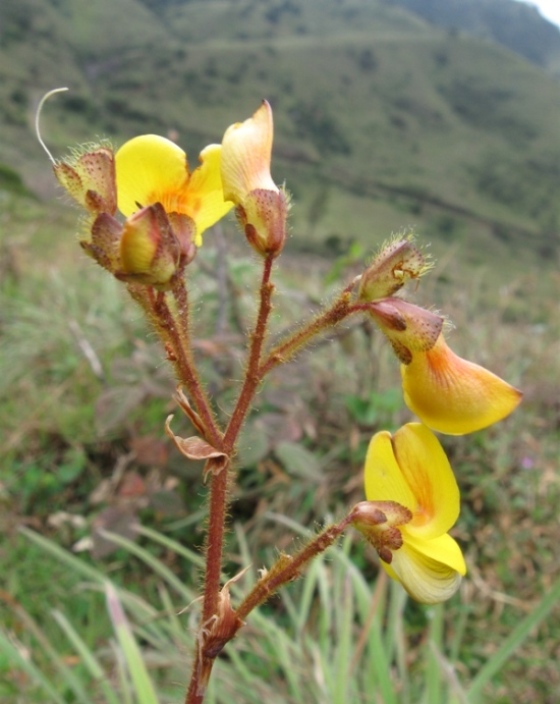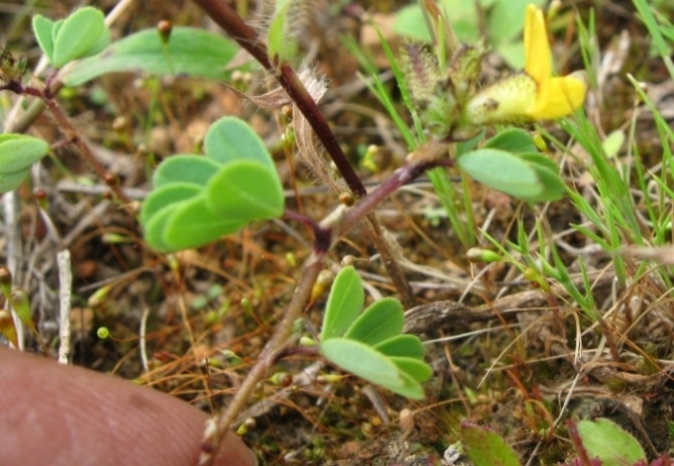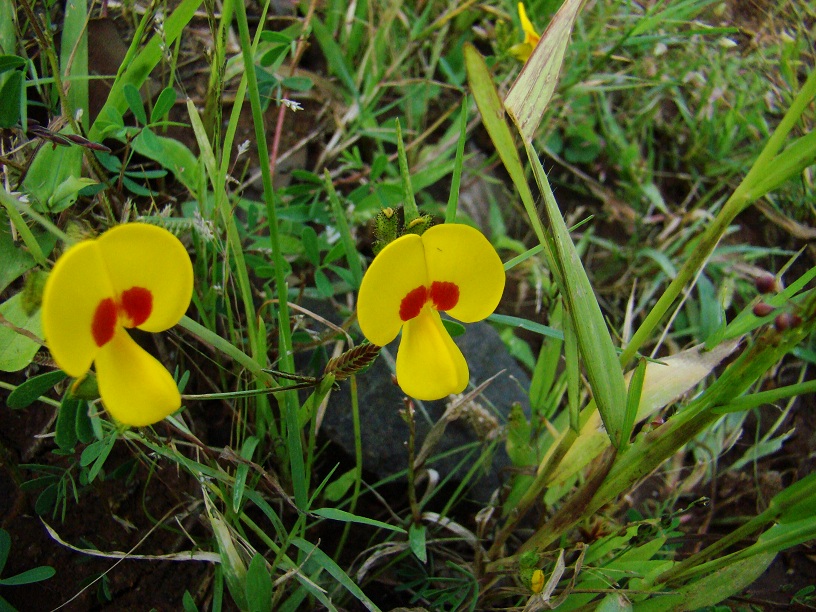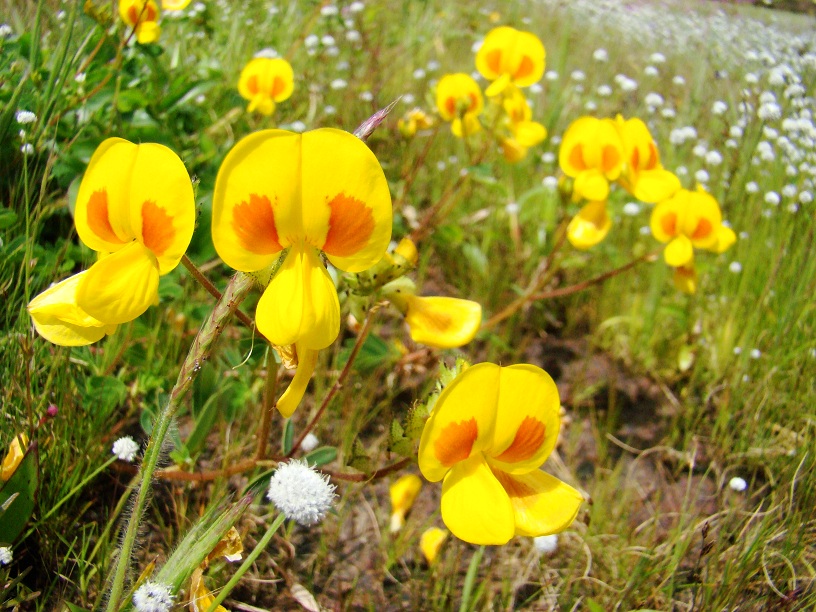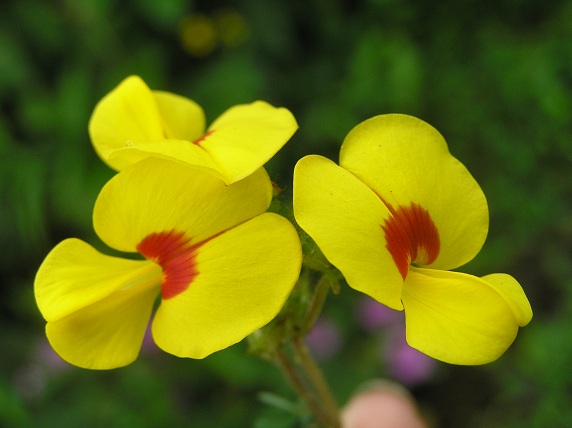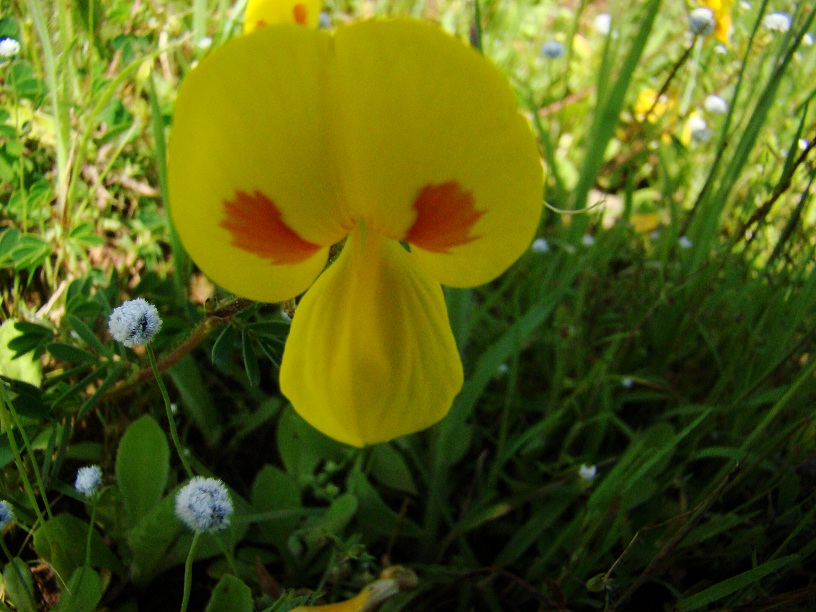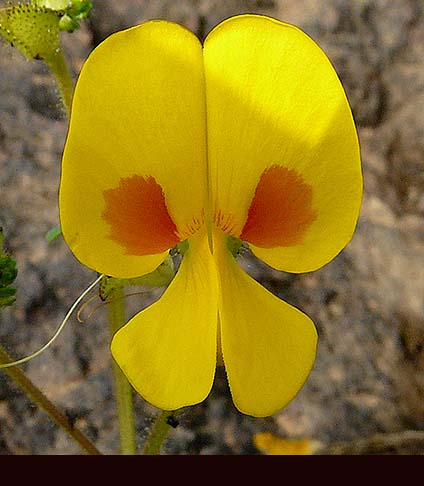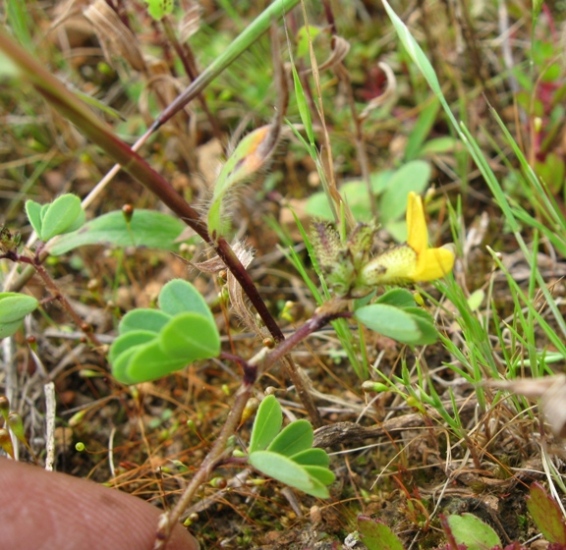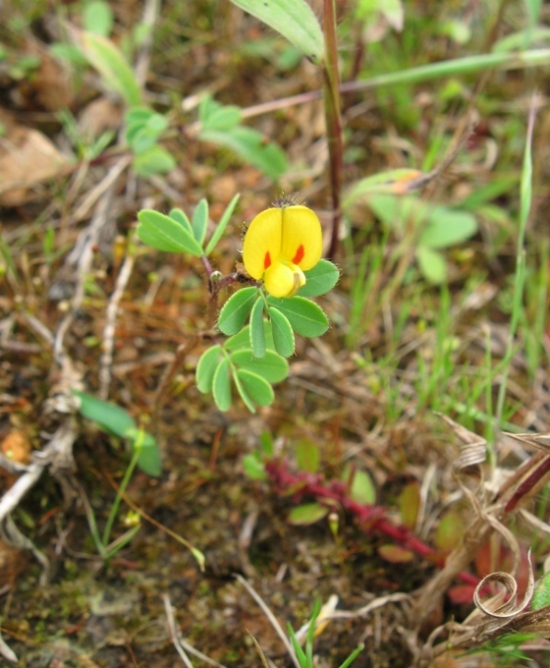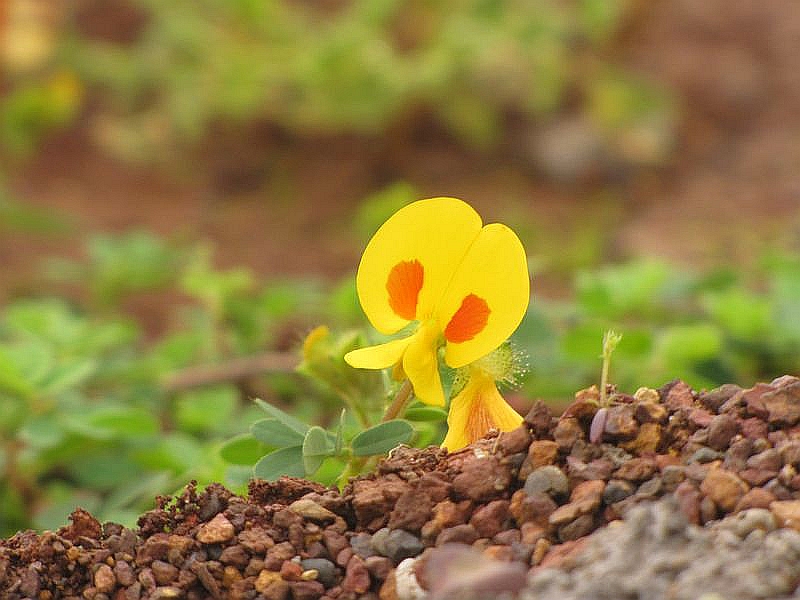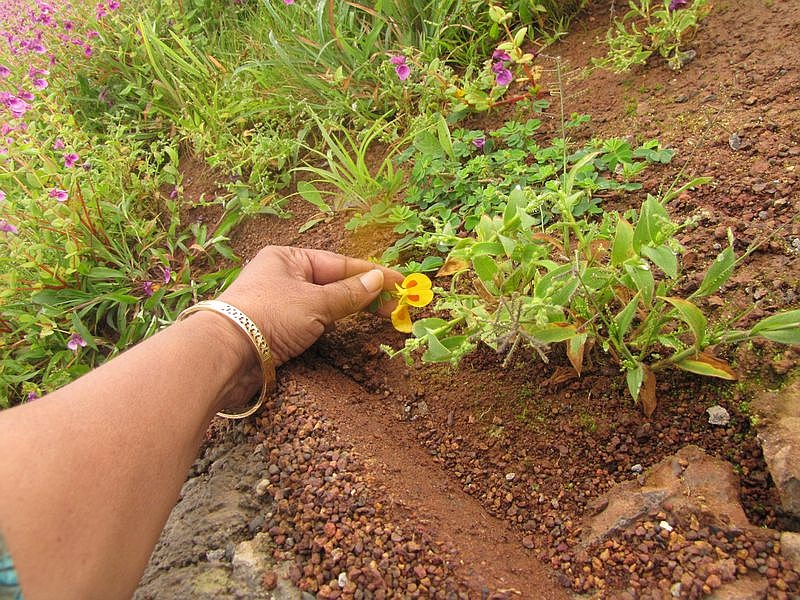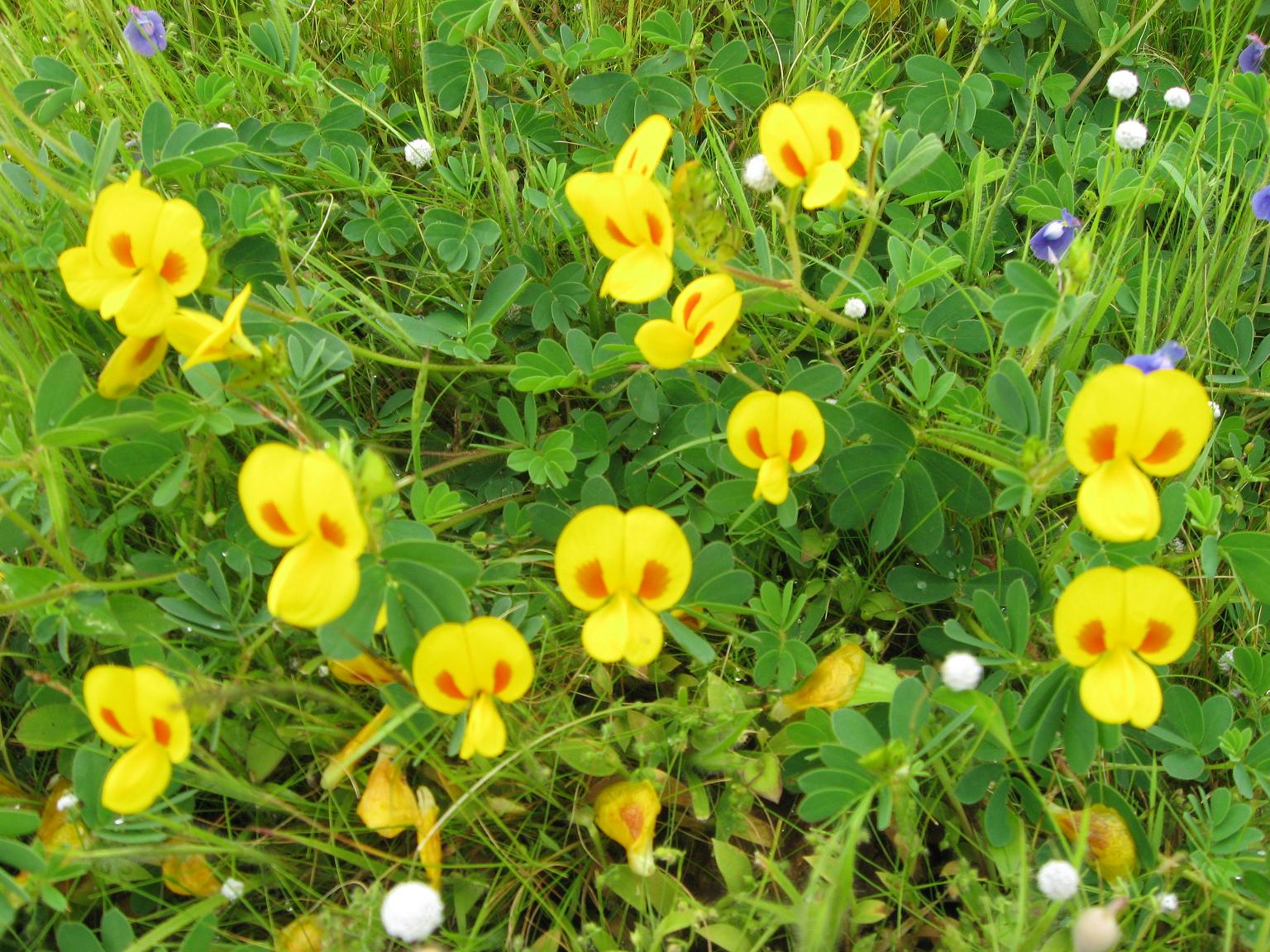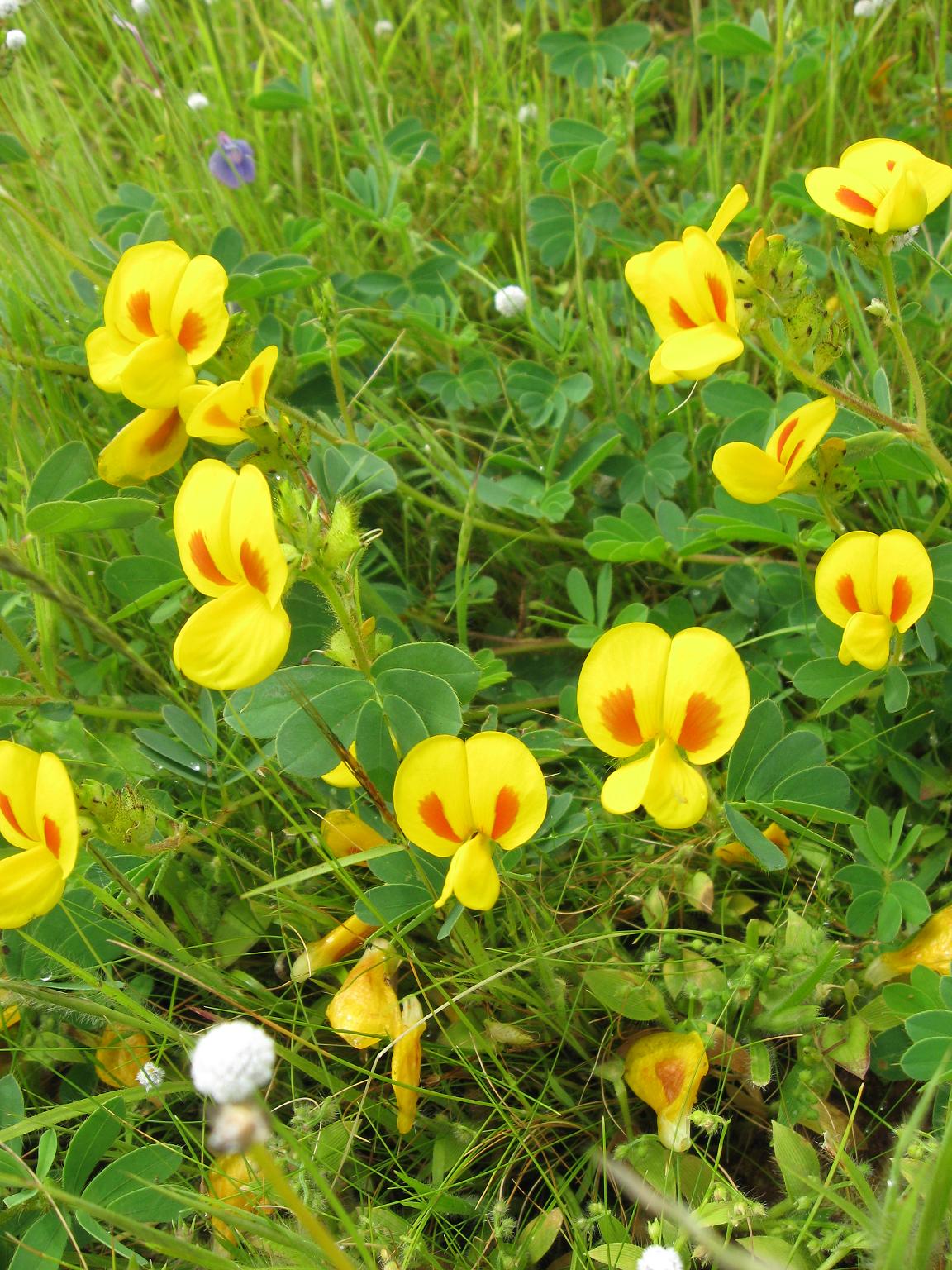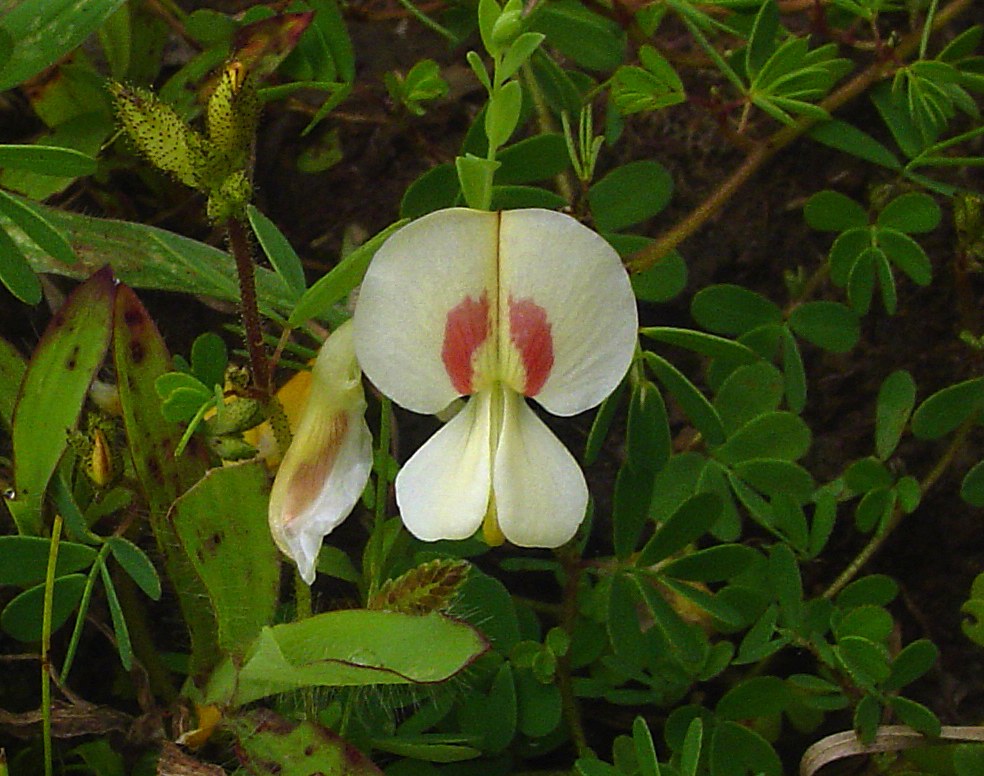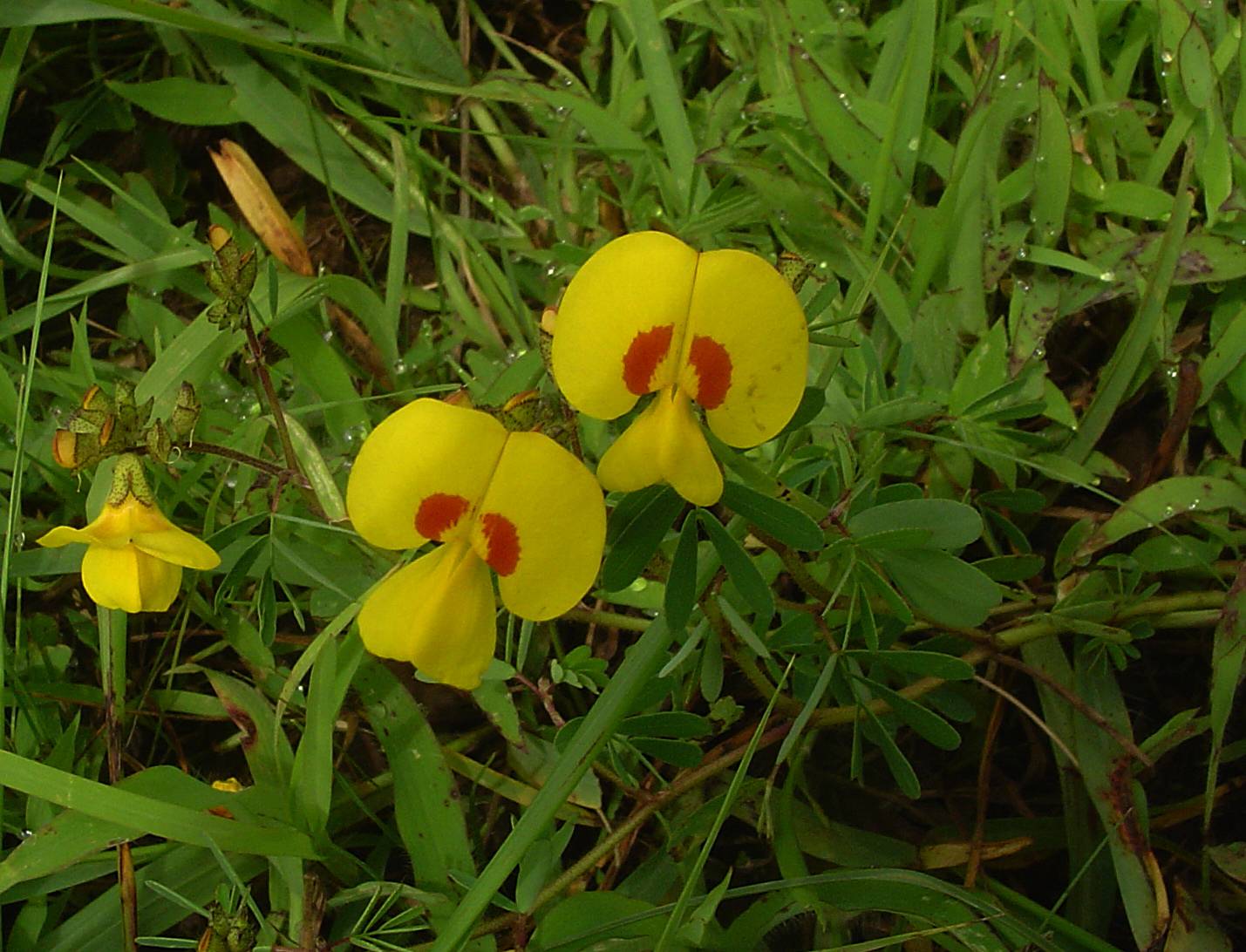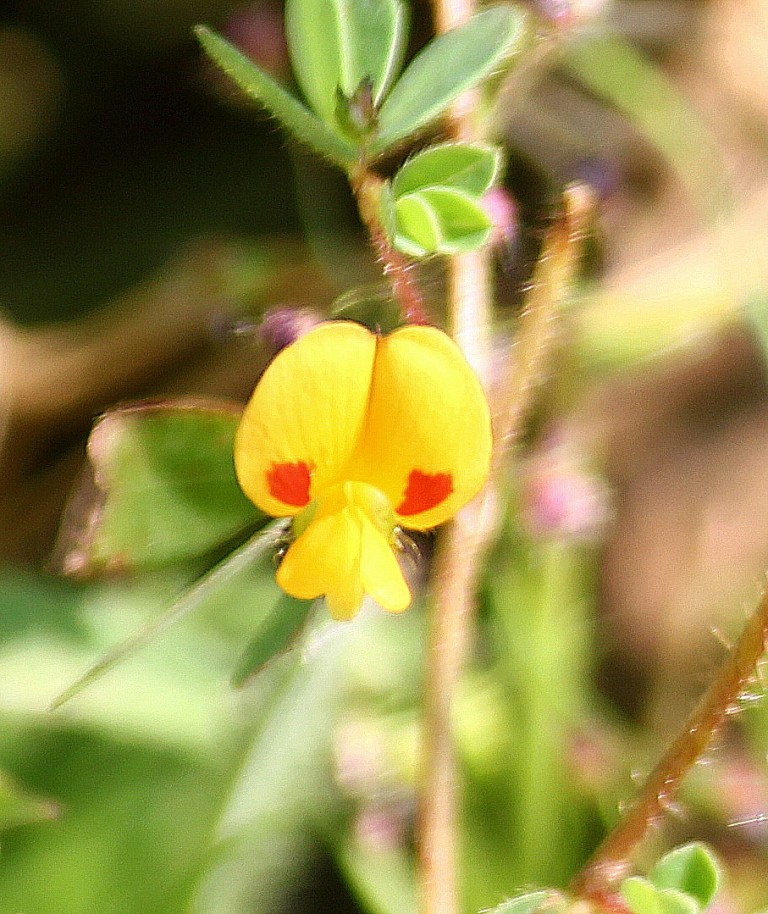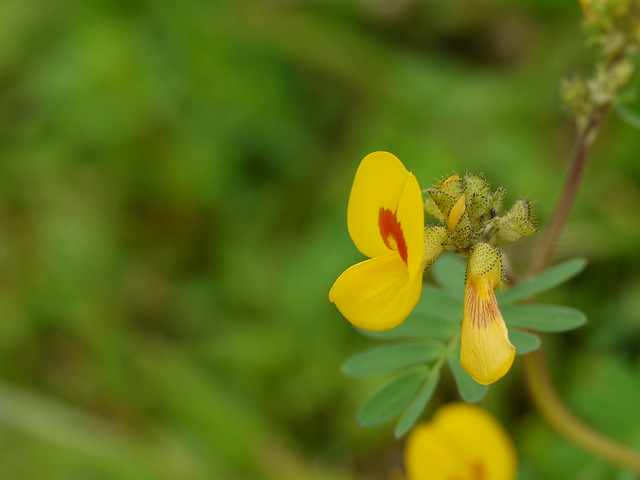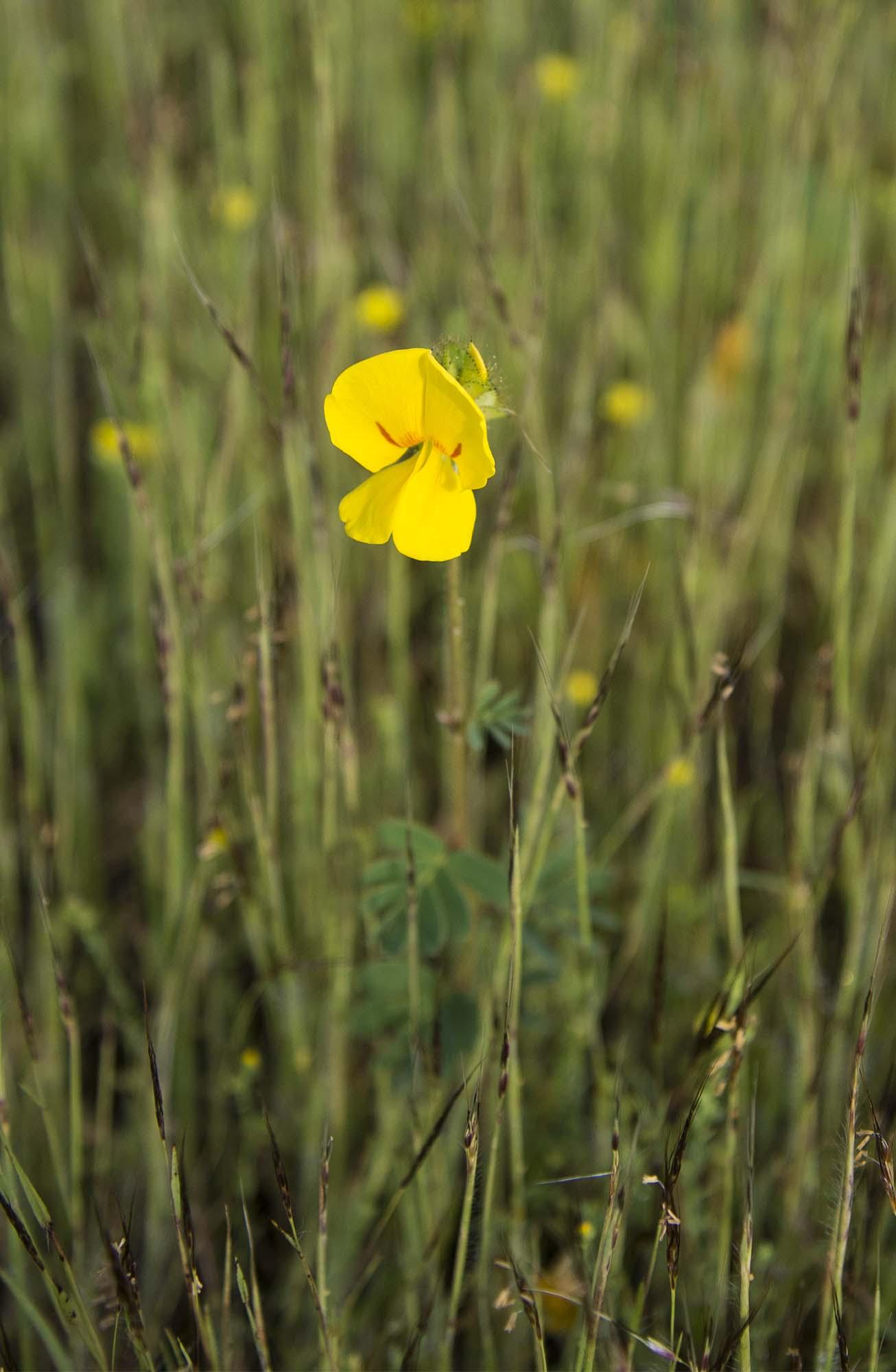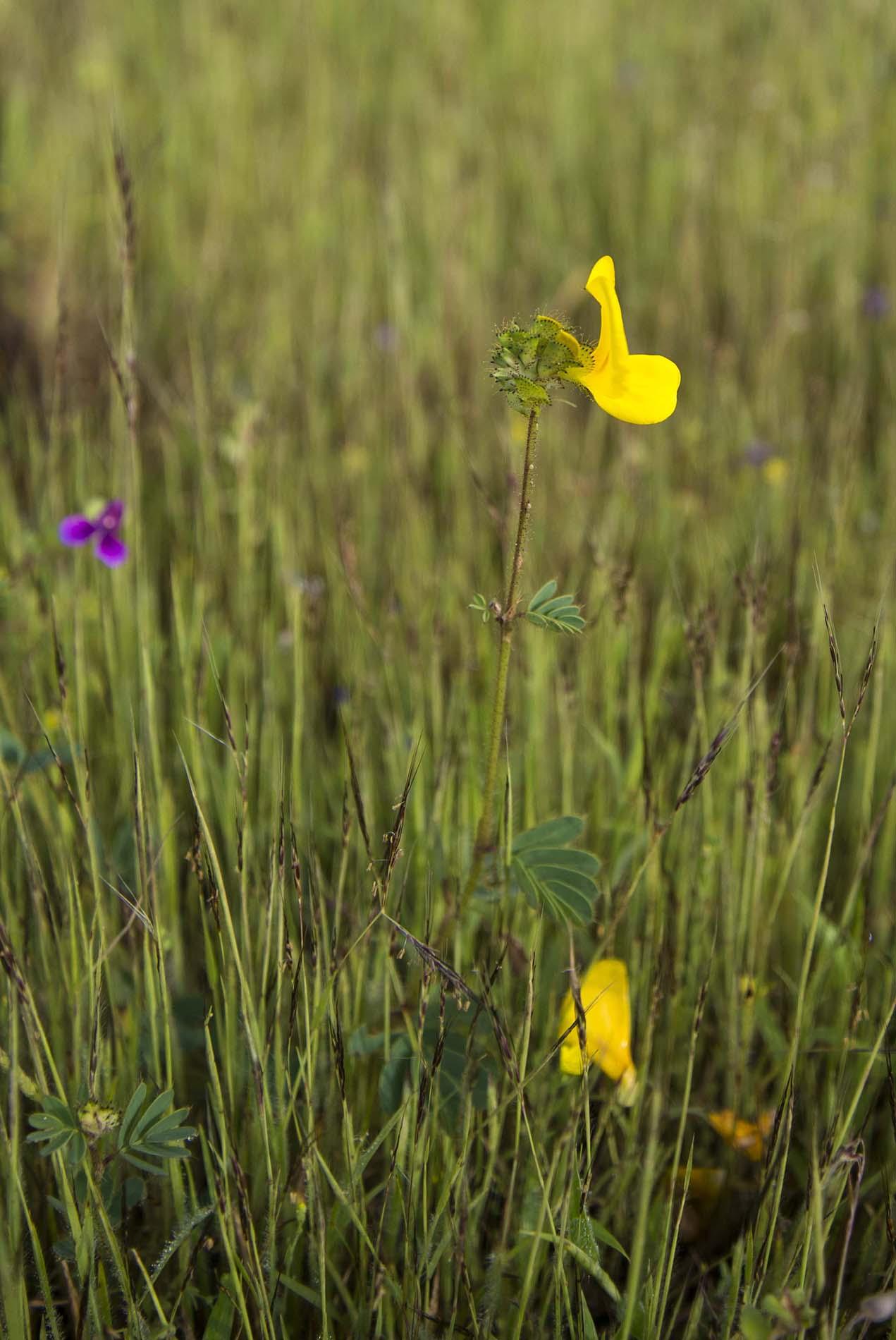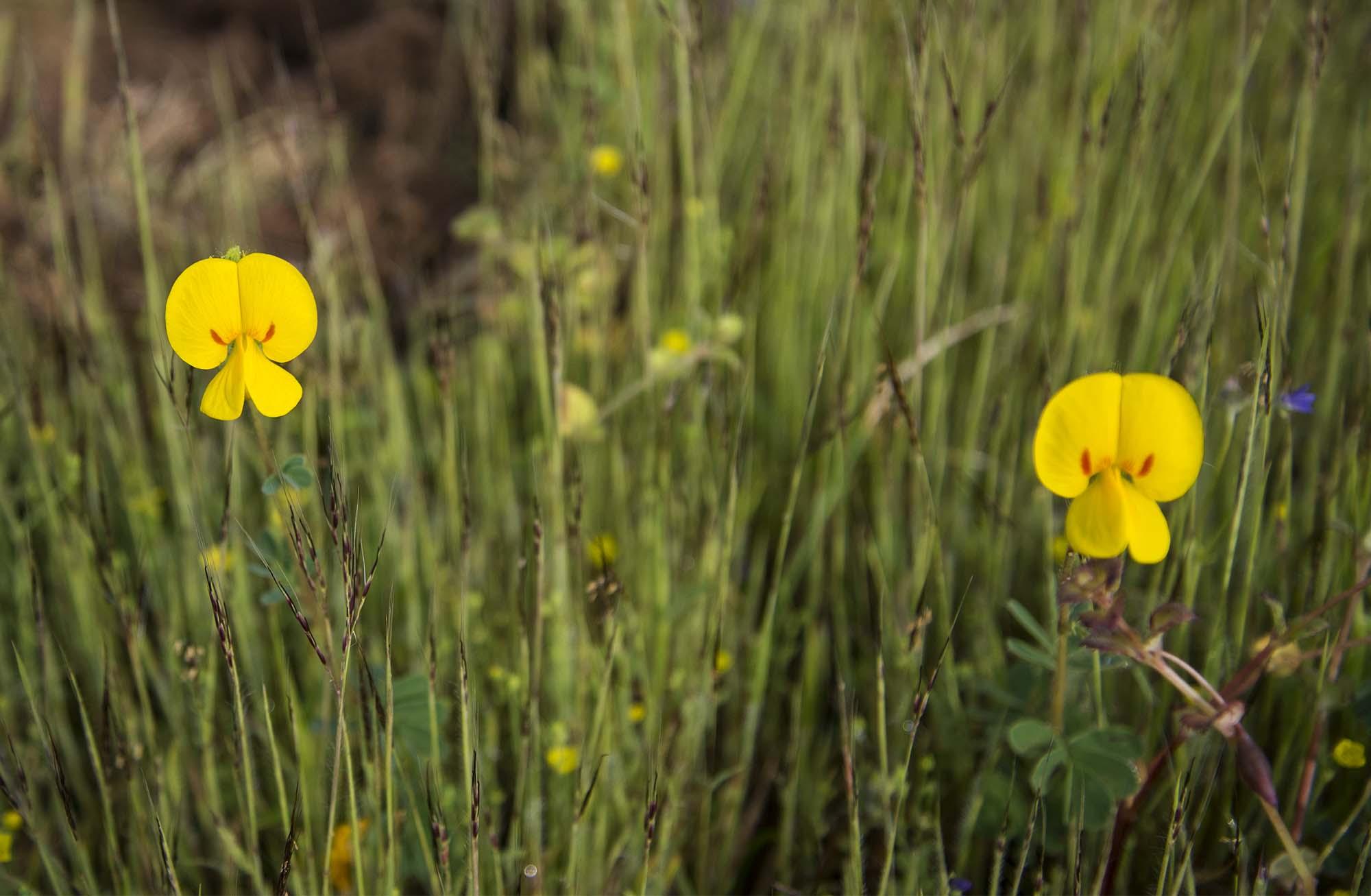|
Smithia hirsuta Dalzell (Syn: Smithia blanda var. humilis Prain; Smithia blanda var. racemosa “Baker, p.p.”);
.
SMITH-ee-uh — named for British botanist and physician Sir James Edward Smith … Wikisource
her-SOO-tuh — hairy … Dave’s Botanary . commonly known as: hairy smithia • Kannada: ಕೂದಲುಳ್ಳ ಹುರುಳಿ koodalulla huruli • Konkani: कवला kavla • Marathi: कवला kawla • Tamil: முடி இலைகண்ணி mudi ilaikanni Names compiled / updated at https://dineshvalke.blogspot.com/2024/08/smithia-hirsuta-dalzell.html . Native of: s and n-e India .
India (N); Andhra Pradesh ; Karnataka; Maharashtra; Manipur ; Meghalaya ; Tamil Nadu as per ILDIS;
. Kas week : Smithia hirsuta SMP: Adding two more pictures with leaflets 8. Satara, Oct 2014 :: Requesting ID – Smithia (?) :: ARKNOV-44 : 7 posts by 3 authors. Attachments (3)
Requesting to please provide ID of this Fabaceae member captured near Satara, Maharashtra in October 2014.
Is this Smithia hirsuta? Smithia hirsuta Dalzell Photographed on 4th October 2015
also known as Hairy Smithia or Kawla (in Marathi) Fabaceae (Faboideae) Fortnight :: Smithia hirsuta :: n Western Ghats :: DVOCT111 : 1 post by 1 author. 19 images.
Smithia hirsuta Dalzell
at Meruling on September 21, 2014
on Kas plateau, September 24, 2015
at base of Koraigad on October 8, 2011
at Tableland, Panchagani on August 26, 2010
at Tableland, Panchagani on August 24, 2010
on Kas plateau, September 28, 2008 Fabaceae (Faboideae) Fortnight :: Smithia hirsuta:: Kas :: PKA-OCT-09 : 1 post by 1 author. Attachments (3)
Smithia hirsuta at Kas.
Please help me to identify this Smithia herb of Fabaceae. The habitat is a grassland of temperate climate.
Height: c.10 cm
Date: 30 Oct 2012
Location: Mukruthi NP, Nilgiris
Alt.: 2450 m asl Must be Smithia hirsuta. First 4 images are of S. hirsuta and last 2 are of S. setulosa.
Fabaceae week-35: To me it appears only slight variation in color I too think both are same plants. Visible leaflets would have helped… I too think they belong to the same species. By the way did you notice any major variation in leaves. If no variation in leaves they are obviously same species. I think Smithia hirsuta Dalzell as per images herein.
Fabaceae-Faboideae (Papilionaceae) Week: Smithia Sp – White: please let us know the size of flower if you can recall. the size of the flower is same as of our regular yellow smithia. Clicked at Kas in Oct 08. Best would be to follow key in Flora of Maharashtra as it is simple provided you have calyx and leaves.
BUT if you are down to these two species and are sure that the choice is between these two ONLY – S. bigemina has 2 pairs of leaflets while S. setulosa has more (and is generally a more erect robust plant- as per my observations) Nilgiris: Smithia for identification 031212MK03: Please help me to identify this small herb found on the grasslands of upper plateau of Nilgiris. What is this Fabaceae member?
Size: 7 cm
Flower: 0.8 cm across … most probably Smithia bigemina Dalzell. Smithia species. May not be S.bigemina. In S.b. the leaves are only two pairs as reported by … in flowersofindia.com at: http://www.flowersofindia.net/Double%Paired%Smithia.html Could it be Smithia setulosa? Can the attached one (from Kas, Aug’12) is same as the one posted by …? I think Smithia hirsuta Dalzell as per another thread: Fabaceae (Faboideae) Fortnight :: Smithia shrub fof ID :: MK-OCT-02 Hairy Smithia (Smithia hirsuta) – indiantreepix | Google Groups : Smithia bigemina:
Common name- Double Paired Smithia Habitat- Wild
Location- Paud road , after Pirangut. (On road to Mulshi ) Date- 04th Sep 2011. I posted this Double Paired Smithia yesterday. .. from “Flowers of India” told me that it is Smithia setulosa and not Smithia bigemina. In his words ” Double Paired Smithia has 4 leaflets grouped together “. S. bigemina is a low herb (5-10 cm) with tiny flowers and S. setulosa is a tall herb (1-1.5 m) found on hills which blooms in October. This is a small erect herb ( 10-20 cm) with flowers in short racemes. From location, season and general appearance his would be S. hirsuta. For a specific justfication of ID from calyx and leaflets a specimen would be necessary. Yes … may be right. S. bigemina has 4 leaflets, S. setulosa 10-12 large leaflets and flowers in panicled secund racemes. S. hirsuta has 6-10 leaflets (8 leaflets are seen in most leaves here), also plant is slender, Fabaceae-Faboideae (Papilionaceae) Week:Smithia hirsuta: The photo is taken from Kas plateau (Maharashtra) in the month of September. . Fabaceae-Faboideae (Papilionaceae) Week :: Smithia hirsuta at Panchagani:
Smithia hirsuta Dalzell SMITH-ee-uh — named for British botanist and physician Sir James Edward Smith
her-SOO-tuh — hairy Aug 26, 2010 … at Tableland, Panchagani, Maharashtra
commonly known as: hairy smithia • Marathi: कवला kavala Native of: s and n-e India some views: Aug 26, 2010 … at Tableland, Panchagani, Maharashtra Aug 24, 2010 … at Tableland, Panchagani, Maharashtra . Kas Week :: DV :: 28 SEP 08 – 1159 :: Smithia hirsuta:
Kas plateau … about 4000 ft asl … one of the 39 World Heritage sites in the Western Ghats of India 28 SEP 08
Smithia hirsuta Dalzell … (family: Fabaceae) SMITH-ee-uh — named for British botanist and physician Sir James Edward Smith
her-SOO-tuh — hairy … Dave’s Botanary commonly known as: hairy smithia • Marathi: कवला kavala Native of: s and n-e India References: Flowers of India • NPGS / GRIN • Flowers of Sahyadri by Shrikant Ingalhalikar KAS Week DS_031012_06 Smithia hirsuta: Interesting looking flowers Kas Week: AVD: 09th Oct 2012: Smithia hirsuta: Kas Week: AVD: 12th Oct 2012 : My Final post for the episode: This is my concluding post for Kas episode.
Attached herewith are images of Smithia hirsuta & Kas landscape.
I would like to conclude my contributions to this episode by sending a link of my article on
Smithia that was a part of my article series in Marathi.
It has been a fantastic episode. Thank you all. Great photographs. Thanks … for sharing so many interesting plants from Kas, the Floral meadow Smithia hirsuta—-for sharing and validation : Attachments (1). 1 post by 1 author. Rajgad, Sep 2014 :: Requesting ID of this Smithia species :: ARKSEP-14: 3 posts by 2 authors. Attachments (3).
Requesting to please ID this Smithia species captured at Rajgad near Pune in Sep 2014. Names of Plants in India :: Smithia hirsuta Dalzell : 2 posts by 2 authors.
via Species > S >
Smithia hirsuta Dalzell … family: Fabaceae
SMITH-ee-uh — named for British botanist and physician Sir James Edward Smith … Wikisource commonly known as: hairy smithia • Kannada: ಕೂದಲುಳ್ಳ ಹುರುಳಿ koodalulla huruli • Konkani: कवला kavla • Marathi: कवला kawla botanical names: Smithia hirsuta Dalzell … heterotypic synonyms: Smithia blanda var. humilis Prain … POWO, retrieved 30 August 2024 Bibliography / etymology
Links listed as references in the notes below, may not remain valid permanently. Portals / websites have a tendency to re-organize / revise their content, leading to change in URLs of pages in their site. Some sites may even close down at their own will. The bits about the languages of India mentioned below are merely some bare facts gathered from the internet; just enough to satisfy curiosity about “where” could the listed names be best prevalent in India. All English transliterated names to be taken sensu amplo. ~~~~~ ENGLISH ~~~~~
written and spoken widely, in most parts of India
hairy smithia
~~~~~ KANNADA ~~~~~
written in: Kannada (ಕನ್ನಡ) … spoken in: Karnataka
ಕೂದಲುಳ್ಳ ಹುರುಳಿ koodalulla huruli
~~~~~ KONKANI ~~~~~
written in: Devanagari (कोंकणी), Kannada (ಕೊಂಕಣಿ), Malayalam (കൊങ്കണി), Perso-Arabic (کونکنی), Romi (Konknni) … spoken in: Goa, Karnataka, Maharashtra, Kerala, Gujarat
कवला kavla
~~~~~ MARATHI ~~~~~
written in: Devanagari (मराठी) … spoken in: Maharashtra, Karnataka
कवला kawla
~~~~~ DISTRIBUTION in INDIA ~~~~~
*Andhra Pradesh, Goa, Karnataka, *Kerala, Maharashtra, *Manipur, *Meghalaya, *Tamil Nadu
* no given name / no name found, in the regional language(s) of the state ~~~~~ Created on: 15:49 30-08-2024 ¦ Last updated: 09:35 31-08-2024 ~~~~~
Names compiled / updated at
https://dineshvalke.blogspot.com/2024/08/smithia-hirsuta-dalzell.html coined Tamil name added … commonly known as: hairy smithia • Kannada: ಕೂದಲುಳ್ಳ ಹುರುಳಿ koodalulla huruli • Konkani: कवला kavla • Marathi: कवला kawla • Tamil: முடி இலைகண்ணி mudi ilaikanni
smithia hirsuta hopefully
would appreciate a confirmation
Kaas plateau
second week of October 2016 Thanks, …, I think matches with images at Smithia hirsutea Smithia hirsuta to me too. . Tamil name for Smithia hirsuta Dalzell: I wish we give a name in Tamil to Smithia hirsuta Dalzell, the “hairy smithia“.
We have இலைகண்ணி ilaikanni, a name known for Smithia conferta Sm.
I hope adding a word prefix (meaning hairy) to இலைகண்ணி would achieve an appropriate name; please help. I couldn’t find a specific Tamil name for “hirsute” or “hairy” when referring to plants (checked TN ENVIS Flora checklist by Dr. Narasimhan et al.). Since this is a distinguishing feature, it would be helpful to have a name with this prefix. I would suggest mudiyudaiya / mudikonda ilaikanni முடியுடைய /முடிகொண்ட இலைகண்ணி or simply mudi ilaikanni முடி இலைகண்ணி. It refers to having hair/trichome and does not specify a hair type or its location in the plant. The Tamil name mudi has multiple meanings such as knot, crown, end etc. but is commonly (mainly) used for hair. Thank you very very much, …, for help with coining this name.
I liked the simple முடி இலைகண்ணி mudi ilaikanni … it serves our purpose very well. , References:
|
Smithia hirsuta
Updated on December 24, 2024

